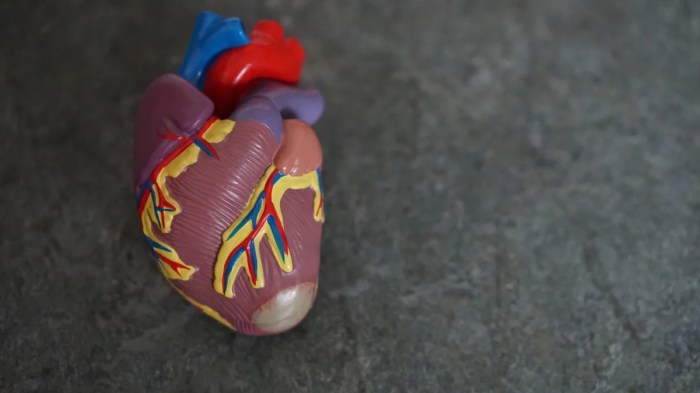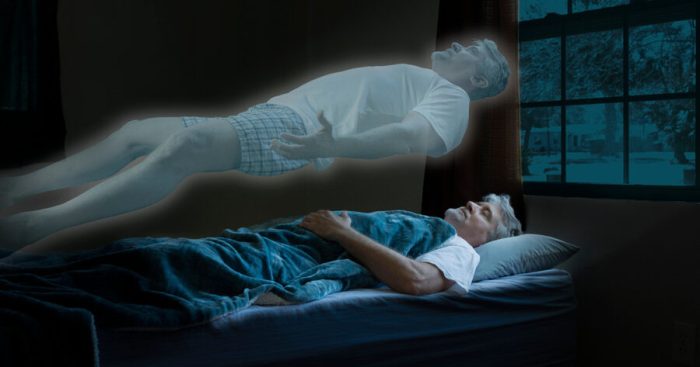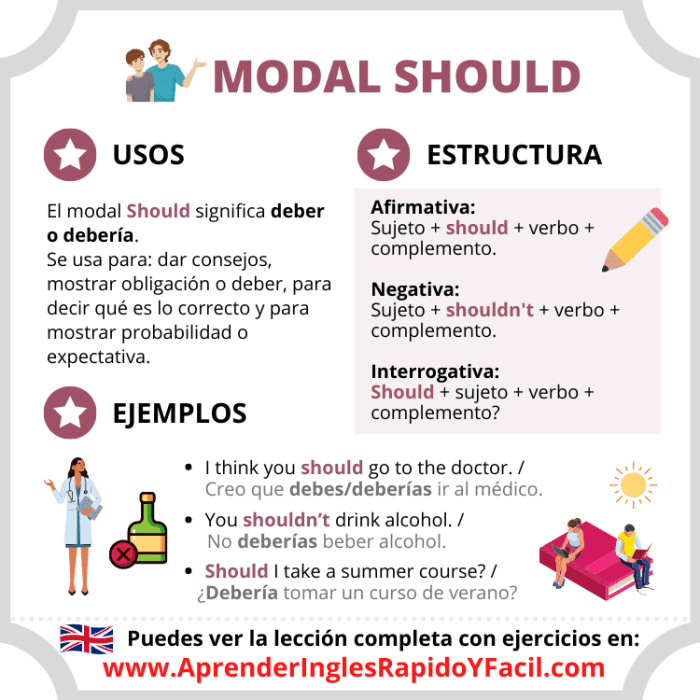What happens to my body right after I die? This exploration delves into the immediate physiological shifts, cellular processes, and external manifestations that mark the transition from life to death. We’ll examine the cascade of events, from the cessation of brain function to the visible signs of rigor mortis, livor mortis, and algor mortis. The journey will be both scientific and thought-provoking, offering insights into the fascinating yet often overlooked processes of the human body’s final moments.
The immediate cessation of brain function triggers a domino effect throughout the body. Respiration stops, blood circulation ceases, and various organs experience profound changes. These changes, though swift, are complex, and we’ll unpack the biochemical processes that take place within the first few minutes after death. The subsequent cellular breakdown, influenced by enzymes and environmental factors, further shapes the body’s transformation.
We’ll also examine the visible signs of death, which offer clues about the time of death.
Immediate Physiological Changes

The moment life ceases, a cascade of physiological changes begins, unfolding in a predictable sequence. These changes, though often unsettling, are a natural consequence of the body’s intricate systems shutting down. Understanding these immediate transformations offers a glimpse into the final moments of a biological existence.
Cessation of Brain Function
The brain, the command center of the body, is the first to exhibit significant changes. The cessation of electrical activity, or brain death, is the hallmark of irreversible cessation of all brain functions. This immediate loss of electrical impulses halts the brain’s ability to regulate bodily processes, including breathing and circulation. The lack of conscious thought and perception is a direct result of the cessation of neural activity.
Sequence of Events After Respiration Cessation
Following the cessation of respiration, the body rapidly depletes its oxygen supply. This leads to a cascade of events, affecting every organ system. The lack of oxygen deprives the cells of the energy they need to function, leading to their gradual deterioration. The heart, deprived of its own oxygen supply, loses its ability to pump blood, initiating the chain reaction of organ failure.
Cellular metabolism slows, and eventually ceases.
Effects of Blood Circulation Loss
The cessation of blood circulation, triggered by cardiac arrest, has profound and immediate effects on various organs. Oxygen deprivation quickly leads to cellular damage and death in tissues and organs throughout the body. The lack of blood flow prevents the delivery of nutrients and oxygen to vital organs like the brain, heart, and kidneys, leading to their dysfunction.
The brain is particularly vulnerable, as it is highly sensitive to oxygen deprivation. Damage occurs within minutes, progressing to irreversible harm.
Biochemical Changes in the First Few Minutes
Within the first few minutes after death, biochemical changes become increasingly evident. The body’s metabolic processes begin to shut down, and cellular respiration ceases. This leads to the accumulation of waste products, such as lactic acid, within the cells. Autolysis, the self-digestion of cells, commences, further contributing to the decomposition process. The breakdown of cellular components results in the release of various enzymes and chemicals, impacting the surrounding tissues.
Physiological Changes in Different Organs and Systems
| Organ/System | Change | Timeframe | Impact |
|---|---|---|---|
| Brain | Cessation of electrical activity | Immediate | Loss of consciousness |
| Heart | Cessation of pumping | Immediate | Loss of blood circulation |
| Lungs | Cessation of respiration | Immediate | Lack of oxygen |
| Kidneys | Loss of filtration function | Minutes | Accumulation of waste products |
| Liver | Loss of metabolic functions | Minutes to hours | Biochemical imbalances |
| Gastrointestinal Tract | Loss of motility | Minutes to hours | Digestion stops |
| Skin | Changes in appearance (e.g., pallor) | Minutes to hours | Visual indication of circulatory cessation |
Visual Representation of Circulatory System Changes
Imagine a diagram of the human circulatory system. The heart, normally depicted as a powerful pump, would be depicted as a still organ, no longer contracting. The arteries and veins, once filled with flowing blood, would now appear empty, with the blood pooling in the lower extremities. This stagnation of blood flow is a direct consequence of the heart’s cessation of function.
The once vibrant network of capillaries, responsible for nutrient and oxygen exchange, would appear as a network of static channels. This visual representation highlights the profound impact of cardiac arrest on the entire circulatory system.
Ever wondered what happens to your body right after you kick the bucket? Well, your cells start shutting down, and your skin, which needs protection from the sun, especially if you have tattoos, might need some serious TLC. To keep your ink looking vibrant, finding the best sunscreen for tattoos is crucial. What is the best sunscreen for tattoos will help you in that regard.
But back to the body’s post-mortem processes, it’s a fascinating (and slightly morbid) journey.
Cellular Processes After Death

The cessation of life marks a profound shift in the body’s internal environment, triggering a cascade of cellular changes. These processes, driven by the absence of metabolic functions and the activation of degradative enzymes, are essential for the eventual decomposition of the body. Understanding these cellular processes offers insights into the natural biological cycle and the complex mechanisms governing life’s transition.Cellular processes following death involve the breakdown of cellular structures and the release of cellular contents.
So, what exactly happens to your body right after you kick the bucket? Well, your muscles relax, and your breathing stops. Interestingly, if you’re experiencing a tension headache, trying some simple techniques like applying a warm compress or practicing deep breathing exercises might help ease the discomfort. Finding a method that works for you, like the ones explained in this helpful guide on how to relieve a tension headache , can make a big difference.
After that, your body starts to cool down, and eventually, decomposition sets in. Fascinating, isn’t it? Just don’t let a headache get in the way of your next philosophical pondering.
The rate and extent of these processes vary considerably depending on factors such as environmental conditions, the individual’s health prior to death, and the specific tissues involved.
Cellular Structure and Function Degradation
The cessation of cellular respiration and other metabolic processes immediately following death leads to a significant disruption of cellular structure and function. Mitochondria, the powerhouses of the cell, cease their energy production, resulting in the depletion of ATP, the cellular energy currency. This depletion disrupts the integrity of cell membranes, leading to leakage of intracellular components. The loss of osmotic balance further contributes to cellular swelling and eventual rupture.
Cellular Component Degradation and Release
Following the initial disruption, cellular components begin to degrade. Proteins, the workhorses of the cell, are broken down into smaller peptides and amino acids by proteolytic enzymes. Nucleic acids, the genetic material, undergo hydrolysis, releasing their constituent nucleotides. Lipids, crucial for membrane structure, are broken down into fatty acids and glycerol. The release of these cellular contents into the surrounding environment contributes to the overall decomposition process.
Enzymes in Decomposition, What happens to my body right after i die
Enzymes play a critical role in the degradation of cellular components after death. These proteins act as biological catalysts, speeding up the breakdown of complex molecules into simpler ones. Examples include proteases, lipases, and nucleases. These enzymes are naturally present within cells or are released from lysosomes, cellular organelles responsible for waste disposal. The activation of these enzymes, often triggered by the increase in pH or the presence of other chemical signals, initiates the decomposition cascade.
Rate of Cellular Breakdown in Different Tissues and Organs
The rate of cellular breakdown varies considerably across different tissues and organs. For example, tissues with high protein content, such as muscle, will show faster degradation than tissues with lower protein content, such as bone. The presence of oxygen and moisture also influences the speed of decomposition. For example, a body in a dry environment will decompose more slowly than a body in a moist environment.
Cellular Processes After Death by Organ System
| Organ System | Cellular Processes | Timeframe | Impact |
|---|---|---|---|
| Nervous System | Neuronal disintegration, synaptic breakdown | Hours/Days | Cell death, tissue breakdown, loss of neurological function |
| Muscular System | Muscle protein breakdown, rigor mortis | Hours/Days | Muscle rigidity, decomposition |
| Cardiovascular System | Blood coagulation, tissue ischemia | Minutes/Hours | Loss of blood circulation, oxygen deprivation to tissues |
| Respiratory System | Lung tissue breakdown, loss of respiratory function | Hours/Days | Accumulation of fluids, cessation of gas exchange |
| Digestive System | Enzyme activation, tissue breakdown | Days/Weeks | Decomposition of ingested material, further tissue degradation |
| Integumentary System | Skin protein degradation, dehydration | Days/Weeks | Skin discoloration, dehydration, and breakdown |
Mechanisms Triggering Cellular Damage After Death
The cessation of life triggers a multitude of cellular processes that result in damage and degradation. Depletion of ATP, the primary energy source, disrupts cellular functions. The accumulation of cellular waste products and the activation of enzymes contribute to the breakdown of cellular structures. Furthermore, the loss of oxygen and nutrient supply further exacerbates cellular damage. These combined effects lead to the eventual decomposition of the body.
External Manifestations of Death
The transition from life to death is marked by a series of observable changes in the body. These changes, collectively known as post-mortem changes, provide valuable clues for forensic scientists and medical examiners in determining the time of death and understanding the circumstances surrounding the demise. Understanding these external signs is crucial for accurately assessing the post-mortem interval (PMI).These changes are not simply a matter of aesthetics; they represent a complex interplay of biological processes that cease once life ceases.
Careful observation and documentation of these changes can provide critical information for investigations.
Visible Signs of Death
The external signs of death are a combination of chemical and physical processes that begin immediately following cessation of the circulatory system. These processes include rigor mortis, livor mortis, and algor mortis. Each of these processes unfolds in a predictable sequence and is influenced by various factors.
Rigor Mortis
Rigor mortis, meaning “stiffness of death,” is the post-mortem stiffening of muscles. This phenomenon is due to the depletion of ATP (adenosine triphosphate), the energy currency of cells. Without ATP, the myosin heads in muscle fibers cannot detach from the actin filaments, leading to a sustained contraction.The onset of rigor mortis typically begins several hours after death and peaks within 6 to 12 hours.
Following the peak, the muscles gradually relax over the next few days as the proteins begin to degrade. Factors such as ambient temperature, muscle mass, and the cause of death can influence the speed and intensity of rigor mortis. For example, in a cold environment, the process might be slower, while individuals with larger muscle mass will exhibit rigor mortis more intensely.
So, what actually happens to my body right after I die? Well, the cooling process begins, a fascinating biological phenomenon. Interestingly, some people experience a distinct “hot sleeper” or “cold sleeper” phenomenon, which can be related to underlying health conditions, but ultimately doesn’t alter the eventual cooling of the body. Understanding how the body temperature changes post-mortem can provide valuable insights into the broader process of decay.
For more on the nuances of body temperature regulation during sleep, check out this informative article on hot sleeper vs cold sleeper. It’s all part of the complex dance of life and death.
Livor Mortis
Livor mortis, also known as post-mortem lividity, is the purplish discoloration of the skin due to the settling of blood in the lower parts of the body. Gravity pulls the blood, which is no longer being circulated, to the dependent areas, resulting in a bluish-purple discoloration.Livor mortis typically begins within a few hours of death and becomes fixed within 8 to 12 hours.
The distribution of the discoloration provides clues about the body’s position after death. If the body is moved after livor mortis has begun to develop, the discoloration may not be evenly distributed.
Algor Mortis
Algor mortis is the cooling of the body after death. The body loses heat to the surrounding environment at a predictable rate. The rate of cooling depends on factors such as the environmental temperature and the clothing or covering of the body.Algor mortis is a more gradual process, typically occurring over several hours or even days, depending on the surrounding conditions.
The body temperature decreases at a predictable rate and can be used to estimate the time of death. For instance, in a cold environment, the body will cool significantly slower than in a hot environment.
Factors Influencing the Rate of Post-Mortem Changes
The rate of post-mortem changes is influenced by a number of factors, including:
- Ambient temperature:
- Body mass:
- Clothing:
- Cause of death:
A warmer environment accelerates the rate of decomposition, while a cooler environment slows it down.
Larger individuals tend to retain heat for longer periods, thus slowing the cooling process.
Clothing can insulate the body, influencing both cooling and the development of rigor mortis.
Certain conditions, such as exertion or trauma, can accelerate or decelerate the onset of these changes.
Estimating Time of Death
A combination of these external signs can assist in estimating the time since death. For instance, if rigor mortis is fully developed, and livor mortis is fixed, then the body has been deceased for a period of time. The forensic scientist considers all the factors, and together with the observed signs, they provide an estimate of the time of death.
Table of Post-Mortem Changes
| Post-Mortem Change | Description | Timeframe | Factors influencing rate |
|---|---|---|---|
| Rigor Mortis | Stiffening of muscles | Hours to days | Temperature, muscle mass, cause of death |
| Livor Mortis | Discoloration of skin | Hours | Blood settling, body position, and movement after death |
| Algor Mortis | Cooling of body | Hours/Days | Environmental temperature, body mass, clothing |
Flow Chart of External Post-Mortem Changes
(A complex flow chart is not possible to represent in text format. A visual diagram would be necessary to represent the order and interconnectedness of these post-mortem changes effectively.)
Decomposition Processes
The final stage of the human journey after death is decomposition, a complex and fascinating process driven by the tireless activity of microorganisms and influenced by the environment. Understanding this process offers a glimpse into the intricate interplay between life, death, and the natural world. It also plays a vital role in forensic science, enabling estimations of time since death and the identification of potential contributing factors.The decomposition of a body is a gradual and multifaceted process, driven by a symphony of biological and chemical reactions.
Microorganisms, including bacteria and fungi, play a crucial role in breaking down the complex organic molecules of the body. Environmental factors like temperature, humidity, and access to oxygen significantly affect the speed and nature of this process. This intricate dance between biology and environment shapes the visible stages of decomposition, allowing forensic experts to gather vital clues.
Microorganisms in Decomposition
The decomposition process is heavily reliant on the presence of microorganisms. These tiny organisms, including bacteria and fungi, thrive on the organic matter of the body. Their enzymes break down proteins, carbohydrates, and lipids, ultimately reducing the body to simpler substances. Different types of microorganisms thrive in various conditions, dictating the rate and manner of decomposition. This microbial activity is the driving force behind the various stages of decomposition.
Stages of Decomposition
Decomposition progresses through distinct stages, each marked by specific characteristics. The stages are influenced by factors such as the body’s location, the surrounding environment, and the presence of specific microorganisms.
- Fresh Stage: This initial stage immediately follows death. No significant changes are visible to the naked eye. Cellular processes within the body are still active, though gradually ceasing.
- Bloated Stage: Gas production by bacteria leads to swelling, primarily in the abdominal region. The skin may appear taut and the body may emit foul odors. This stage typically lasts for several days. The body’s internal environment becomes increasingly anaerobic, creating an environment conducive to the growth of different microorganisms.
- Decay Stage: The decomposition process intensifies, with tissues breaking down and liquefying. The body’s structure begins to disintegrate, and the skin may start to slough off. This stage can last for several days to weeks. The release of gases and fluids from the body becomes more pronounced. The foul odor intensifies, and the body becomes increasingly vulnerable to insect colonization.
Factors Influencing Decomposition Rate
Numerous factors influence the rate of decomposition. These factors are critical in forensic investigations.
- Temperature: Higher temperatures generally accelerate decomposition, while lower temperatures slow it down. A warmer climate will lead to faster decomposition compared to a cold one. For example, a body left in a desert will decompose faster than a body buried in a frozen tundra.
- Humidity: High humidity can accelerate decomposition, providing a favorable environment for microorganisms to thrive. Conversely, extremely dry conditions can slow down the process. The moisture content in the air can significantly affect the microbial activity, which, in turn, dictates the pace of decomposition.
- Environmental Conditions: Factors like access to oxygen, burial depth, and the presence of scavengers all impact the decomposition rate. A body left in an open field will decompose faster than a body buried deep underground. The presence of scavengers can accelerate the decomposition process.
Role of Insects in Decomposition
Insects play a significant role in the decomposition process, particularly in the later stages. They are attracted to the decaying body, and their activity contributes to the breakdown of tissues. Different insects colonize the body at different stages, and this pattern can provide valuable information for forensic scientists. The sequence of insect colonization can aid in estimating the time of death.
Stages of Decomposition Table
| Stage | Characteristics | Timeframe | Indicators |
|---|---|---|---|
| Fresh | No significant changes | Immediate | No obvious changes |
| Bloated | Swelling, gas formation | Days | Abdominal distension, foul odor |
| Decay | Decomposition, liquefaction | Days/Weeks | Tissue disintegration, skin slippage, odor intensification |
| Post-Decay | Skeletonization, dry remains | Weeks/Months | Skeleton remains, dry skin |
Complete Breakdown of the Body
The complete breakdown of the body involves the progressive degradation of tissues and the conversion of complex organic molecules into simpler substances. This process is driven by microbial action and environmental factors. The body eventually reduces to its basic components, which are then released into the environment. This breakdown is essential for the natural recycling of nutrients.
Conclusive Thoughts: What Happens To My Body Right After I Die
In conclusion, the transition from life to death is a fascinating and complex process, marked by a cascade of physiological and cellular changes. Understanding these events offers a unique perspective on the human body’s remarkable capabilities and the inevitable journey towards decomposition. From the immediate cessation of brain function to the gradual breakdown of tissues, the body’s response to death is a symphony of biological events.
We’ve explored the scientific details of this journey, but the larger philosophical implications are also significant. This journey through death is a reminder of the cyclical nature of life, and the profound impact our bodies have on the world around us.




